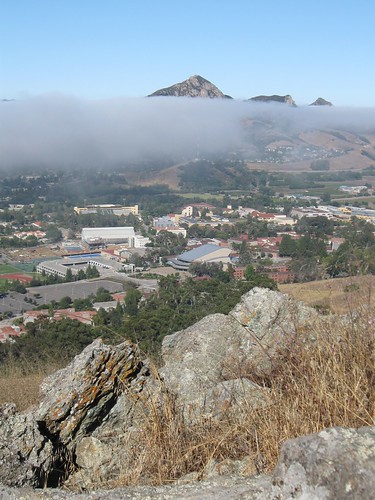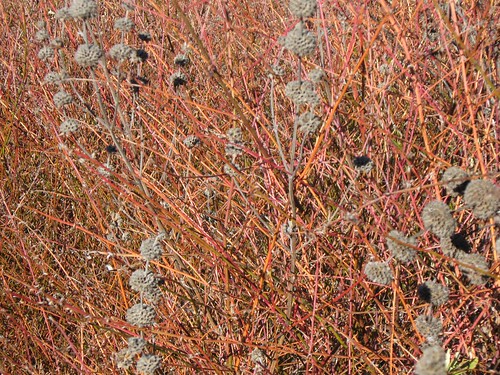Tuesday August 17
I sleep in the tent and get up early to retrieve the food, light a fire and make coffee. Fog remains, we pack slowly and head up the beach, more than ever appreciating its variety of terrain and choice of routes and the continual activity of the water. Offshore, humpback whales and dolphins cavort.
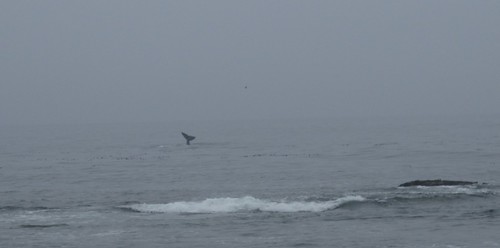
Back in the woods, Steve and I continue our conversation. He describes a five-day Warrior-Sage workshop he attended last year. He says this is the time of life to get it together, get the whole picture. Alone again, I pass through an unsettling sequence of thoughts about marriage and home life which predictably resolves itself in eagerness to return. The fog has lifted but low overcast remains .
At 1:30 we set up camp at the Darling River campsite, aware of the proximity of the trail’s end. Peter and Paul nap. I meditate on my Thermarest, keyed in to the wave rhythm. Steve and I head to the river to fill our Camelbacks and see two women with bathing suits and towels heading upstream. We follow and come upon a gorgeous waterfall unmarked on the map”a loud steady flow through a dramatic cleft in rocks surrounded by higher cliffs from which tall spruces rise, their tops lost in cloud. The pool below is clear and deep.
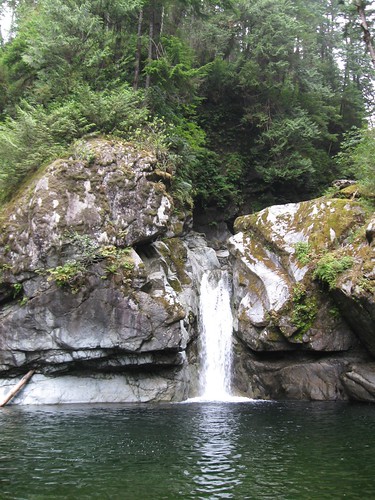
The women jump in and scream and come out and wash their hair.
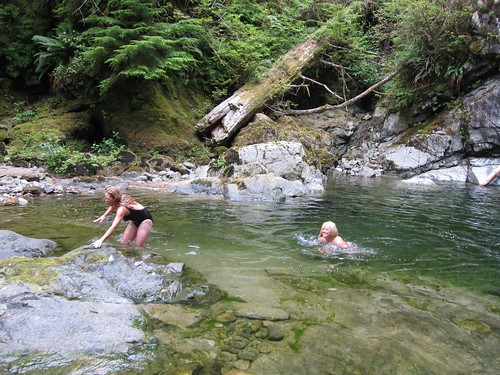
In the chilly weather at first I’m not inclined to swim, but I tell them they’re shaming me. They’re proud of their ages, 55 says one, here with friends from West Vancouver who’ve never backpacked but decided in a bar to do this. As they leave, I strip and test the water. About the same temp as the ocean, not requiring long acclimating. The aerated and circling water produce an intense adrenaline rush.
Back at camp I look at shots of Jan at the wedding in Oregon, still on the camera. Steve and I figure that if we move to the next campsite and can rearrange our reservations on the bus back to the trailhead, we’d prefer to come out a day early. Awake now, Paul agrees enthusiastically. My cellphone barely has enough juice to make the connection, but it works and they reschedule. Peter wakes up refreshed and also agrees. We cook dinner, pack up, hike an hour and a half further down the trail to Michigan beach where we pitch our last camp.
Wednesday August 18
Wind blew last night, sexy dreams. Black bear roaming on the beach. Early departure, 12K to the parking lot. I hang back alone for most of the hike. Elegaic mood, farewell to forest and ocean. A great trip, with a piece of driftwood, photos and journal as souvenirs.
The last section of trail winds through old growth forest devastated by recent storms. Huge trunks crisscross it, unblocked by the Indian trail maintenance crew, but the spectacle of destruction remains. 2000 ancient trees went down here.
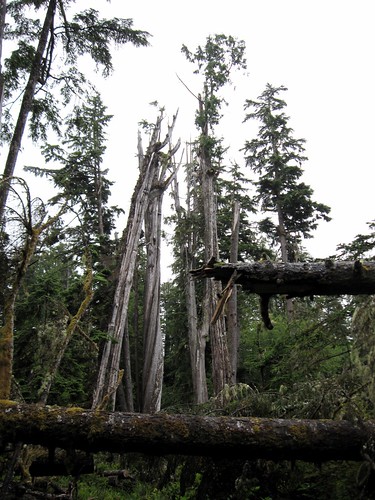
Centuries of growth, building upward and buttressing below, structures and systems strong enough to move tons of water hundreds of feet high every day, to hold immense weight aloft and to withstand storm and strain for centuries suddenly smashed and shattered.
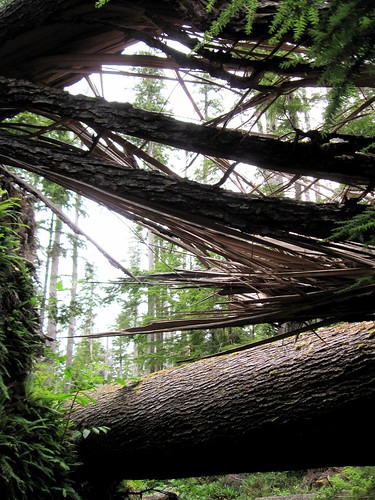
But already the great upended rootballs are growing ferns and salal and new trees on their vertical exposed surfaces, replacement plants that will take root in the ground as their hosts decompose into a new forest floor.
We emerge from the last stretch of forest onto the beach at Pachena Bay. Three people are walking their dogs. They’re from a world different from the one we’ve inhabited for the last nine days. A man asks if we’d like a final group portrait.
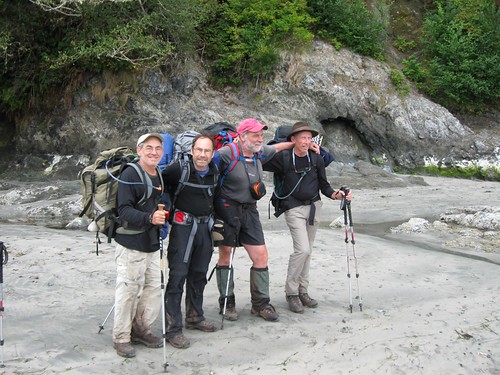
He’s the mayor of Bamfield, the nearby town. As we’re about to get on the Shuttle in the parking lot, the women from the waterfall and their friends go to their pickup truck and shout Oh no! It’s been broken into, their phones, wallets and gear stolen, the dashboard and interior trashed. Our bus leaves as they come to grips with the situation.
[Full set of 196 pictures, slideshow and all sizes]




